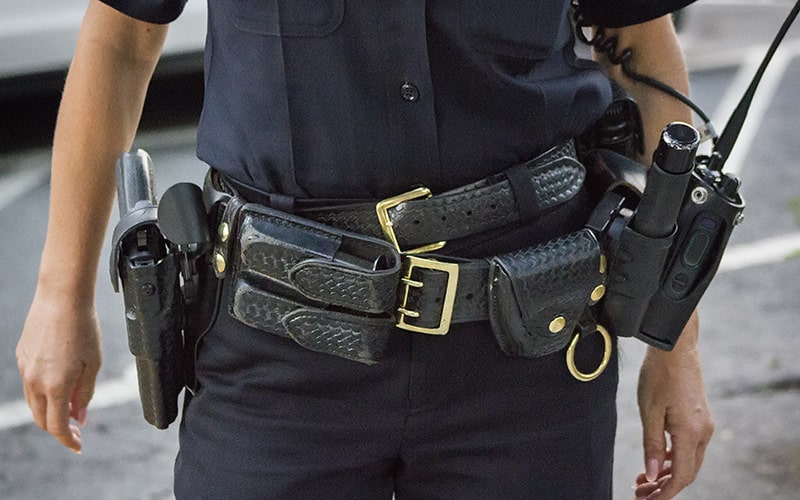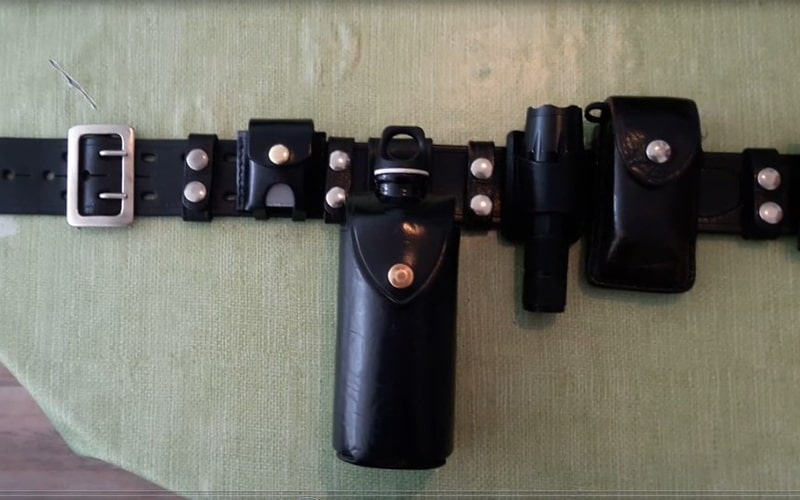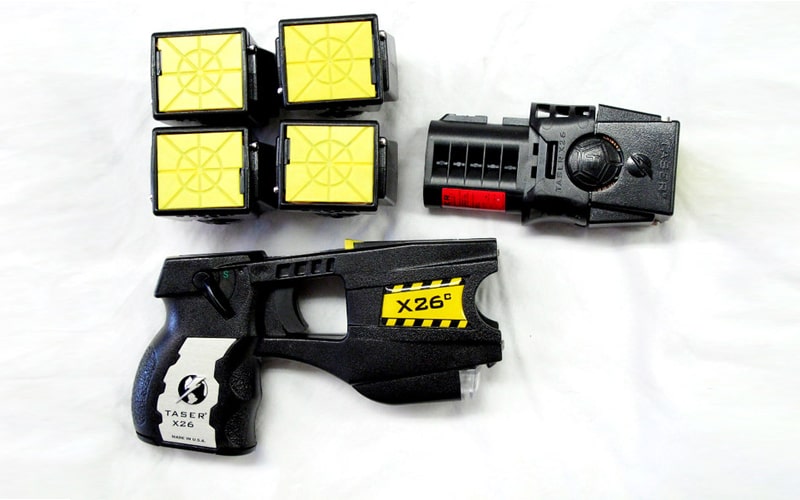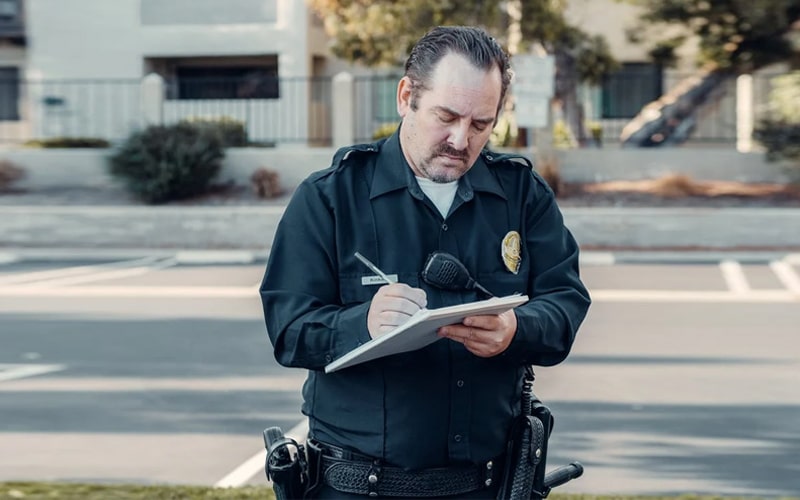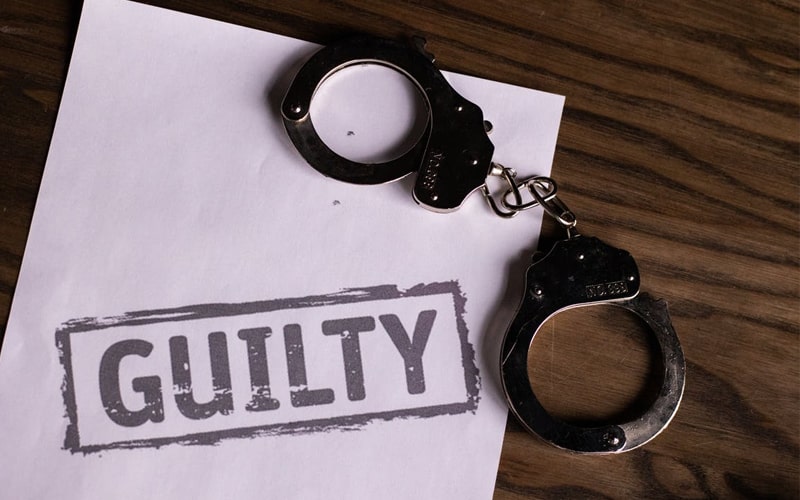The duty belt is an indispensable item for police officers. It carries all the items you need for the job and missions.
It is crucial to reach and use the right equipment in urgent situations. Quick access to items like guns can even save your life at some points.
Every police officer must learn to set up the duty belt properly in the most convenient and effective way when carrying out missions.
We can judge the professionalism and responsibility of a police officer based on the way he sets up his duty belt.
This post will discuss “duty belt setup” and provide some useful tips on positioning your gears.
Duty Belt Position
There are many ways to position your duty belt. Each police officer prefers a unique setup based on body shapes and duties.
The important thing to keep in mind is that you must reach a balance between convenience and functionality.
In particular, a good setup allows you to access the equipment with ease in a matter of seconds. In urgent situations such as facing a dangerous criminal, just a small mistake can lead to serious consequences.
However, you should place your tactical belt in the most comfortable position because it will follow you throughout your entire career.
A bad setup can cause annoying uncomfort and hinder your performance. It may affect your body posture and generate back pains in the long term.
A duty belt fully equipped with essential gears can weigh up to 10 pounds (4.5 kilograms). Therefore you should aim for balance when placing the objects.
Try to distribute the accessories equally in weight on all sides of your body.
For example, if you put your two handcuffs on the left of the belt, you should place the gun and holster with nearly equal masses on the right side.
Try to maintain the same setup whenever you are on duty. It will form an unconditional habit over time that enables you to know the exact positions of each specific gear.
Firearms
It is encouraged to place your firearm on the side of your dominant hand. The opposite side should be the taser.
However, you can switch their positions according to your preferences.
Any setup order is acceptable as long as you can draw the firearm fast and don’t mistake their positions.
Radio
Radio should be put on your non-dominant side (usually the left) because, in most circumstances, your dominant hand is busy holding the weapon while you call for assistance.
Therefore it is easier to reach the radio if it is put on your left side.
Taser
In urgent situations, police officers must draw their weapons and fire immediately without checking. Due to this reason, mistaking the taser for a pistol can cause deadly consequences.
Therefore the tasers are usually placed on the left or non-dominant side. This order is easier to remember, and you can draw your taser with the dominant hand fast.
Handcuff
It is optimal to put the handcuffs next to the belt buckle or on the back. However, just put it in the place where you feel comfortable.
Examine Your Military Duty Belt Setup
After you have selected a favorite setup for your military duty belt and gear, try some basic movements to check its effectiveness. For example, practice drawing guns or handcuffs from the belt to see how fast you can perform.
If it is difficult or takes too long to reach the accessories, you need to adjust the positions of your duty belt.
The next step is to take a walk or run wearing your duty belt and equipment. A good setup will not hinder your body movements and posture.
You can even jump or perform some robust movements to check if the gear falls out of your belt. Proper setups won’t generate any sound, even the smallest one when moving.
This quality is very important when approaching criminals silently or breaking into dangerous locations. A small sound from your accessories may alert the criminals and affect the whole mission.
Just take a few hours of testing to check if your setup can meet these requirements. After many attempts, you will figure out the best setup suitable for your body shape and preferences.
Essential Equipment
Here is the list of essential accessories to put on your duty belt. They should be applicable for the majority of tasks and duties of a police officer.
- Firearms and holster (usually pistol): An indispensable item used to threaten or take down dangerous criminals.
- Body cameras: Cover many specific needs, such as dealing with complaints from offenders or collecting on-scene evidence.
- Spray and holder: Used to neutralize the criminals or offenders, which hinders their breathing and sight.
- Radio and microphone: Used to communicate with the other officers and departments.
- One-time-use gloves: Used for handling crime scenes and collecting important evidence.
- Handcuffs and keys: A common item used to arrest or impair the hand movements of the suspects. You should carry more than one to handle a group of offenders.
- Special flashlight: applicable when working at night or exploring dark sites.
How To Choose Duty Gears?
Choosing the right equipment will help you carry out the tasks more effectively. Make sure that your belt setup for small waist complies with the regulations in your department.
Duty Belts
The beginners may get confused with the different ways people set up their duty belts. There are some basic methods to put the accessories on your belt.
In the past, police officers used to thread a regular belt through the holes of the accessories, and the belt loops would keep them in a firm position. This method gives you a more professional and tidy appearance.
However, it takes a lot of time to thread the belt through all the pieces of items.
Busy police officers don’t have sufficient time to put on their belts many times a day, which is quite inconvenient.
A more efficient method is to use the belt keepers. It is a special belt designed to hold all the equipment.
When applying this method, you have to put on a regular leather belt inside and a special belt keeper outside your uniform. Then you can attach this special belt to the inner one using five to six belt keepers.
This method consumes considerably less time and effort as you don’t have to take each piece of the item down once at a time. Just unsnap the five keepers, and the entire belt will fall off.
There are three basic types of the holster with retention levels from 1 to 3.
The higher the retention level, the more steps it takes to draw your firearm. You will be given holsters suitable for the nature of your missions,
The holsters are usually provided by your department, but you can customize your own holsters for special firearms and flashlights.
A popular instance is the laser gun which allows you to shoot the targets in the dark using laser aiming. Adding this special firearm and its holster to your duty belt doesn’t violate the regulation.
The duty belt is a critical part of any law enforcement uniform. It provides a secure and convenient way to carry all of the necessary equipment, including a weapon, handcuffs, pepper spray, and a radio. There are two main materials used for duty belts: leather and nylon.
Leather belts are considered to be more professional and are typically worn with class-A uniforms. Nylon belts are lighter and more comfortable, making them a better choice for class-B uniforms or for plainclothes officers. When selecting a duty belt, it is important to consider the type of uniform that will be worn and the specific needs of the officer.
Handcuffs
A police officer should equip at least 2 or 3 handcuffs for unexpected situations. The basic types of handcuffs are hinged cuffs.
You can pair the two hand cups together to lock down the suspects. This equipment is only used under the enforcement of the laws.
Handcuffs can become rusty or wear down after a long period. You can maintain them regularly by adding oil to the locking mechanism.
The handcuff keys should be stored in unseeable positions in case someone tries to steal them with bad intentions. It is also dangerous if locked-down criminals can access these keys.
Special Equipment
Officers handling civilian crimes use pepper spray more often than a firearm or taser. The spray should be kept in front of the firearm for faster access.
Be careful with the spray button as you can injure yourself when running or sitting. It would be best if you also equipped a universal key (usually the size of a pen) to lock or unlock the handcuffs quickly.
Try to store a hidden key to unlock the handcuff under your shoe pocket. If the criminals disarm and lock you down using your handcuff, this act saves your life.
You should choose the key holders with a rubber cover to absorb the noise generated from the keys when moving. The jingle-jangle sound of the keys is annoying and helps the offenders locate your position.
Final Thoughts
We hope that these instructions on duty belt setup can satisfy you. Overall, each person has a unique setup style suitable for their needs and comfort. Just take some attempts to find out what is the best setup for you.
Thank you for reading!
If you’re looking for a duty belt setup that’s ready to go?
Check out our selection of police duty belts for sale.
We’ve got a great selection of duty belts, rigorously tested and approved by law enforcement professionals.
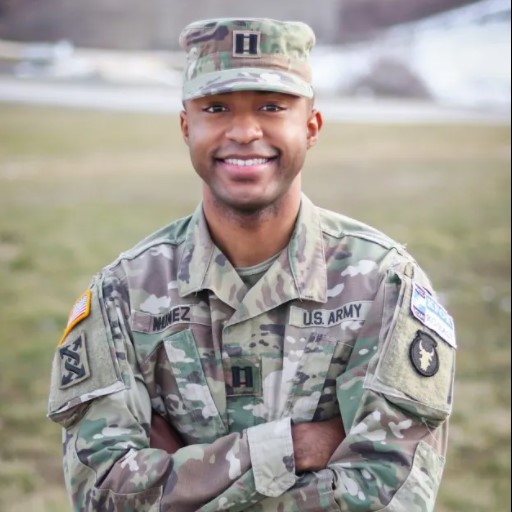
The 16th Sergeant Major of the Army, Sgt. Maj Christian Smelling was sworn in on August 11th 2009 and has held every enlisted leadership position ranging from cannon crew member to command sergent major

